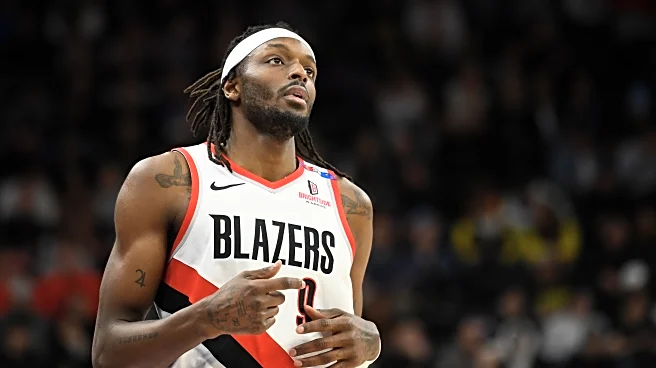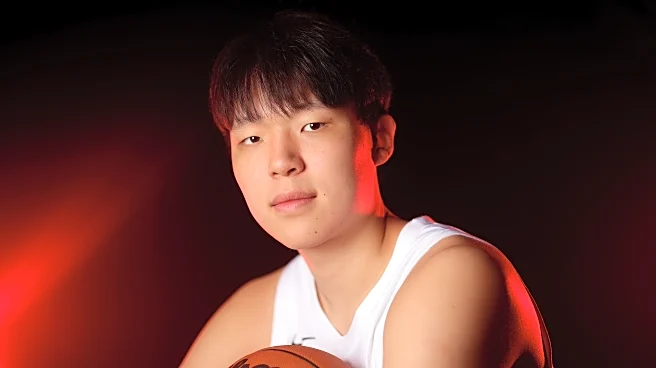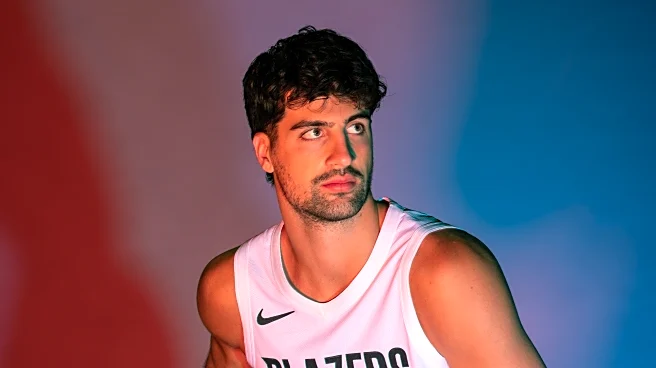What is the story about?
What's Happening?
The Portland Trail Blazers are grappling with a strategic dilemma involving their two promising centers, Donovan Clingan and Yang Hansen. Both players, selected in consecutive first-round drafts, have become pivotal to the team's future. However, their inability to effectively share the court presents a significant challenge. Clingan excels as a rim protector, while Hansen shows potential as an offensive hub. Despite their individual strengths, neither player can transition to the power forward position, limiting their combined playing time to 48 minutes. This limitation poses a problem for the Blazers, who already face offensive spacing issues and defensive vulnerabilities due to the centers' lack of lateral quickness. The team's head coach, Chauncey Billups, may need to experiment with a double big lineup in specific matchups, but the overall lack of positional versatility could hinder the team's development.
Why It's Important?
The situation with Clingan and Hansen highlights broader issues of asset management and roster balance for the Trail Blazers. The team's decision to invest heavily in two centers could lead to a logjam, affecting player development and team performance. If Hansen fulfills his potential, the Blazers might face a tough decision on whether to retain both players or trade one to address other roster needs. This scenario underscores the importance of strategic planning in team building, as the Blazers must navigate these challenges to remain competitive in the NBA. The outcome of this situation could influence the team's long-term success and impact their ability to compete in a league where versatility and adaptability are crucial.
What's Next?
The Trail Blazers will likely continue to evaluate the performance and development of Clingan and Hansen throughout the season. Coach Billups may test different lineup configurations to maximize the players' strengths while minimizing their weaknesses. The team's management will need to monitor the situation closely, considering potential trades or roster adjustments if the current strategy proves unsustainable. The decisions made in the coming months could shape the Blazers' future, determining whether they can effectively integrate both centers into a cohesive and competitive team.
Beyond the Headlines
This situation also raises questions about the broader implications of drafting strategies in the NBA. Teams must balance the immediate need for talent with long-term roster construction, ensuring that investments in players align with overall team goals. The Blazers' experience could serve as a case study for other teams facing similar challenges, highlighting the importance of flexibility and foresight in player acquisitions and development.
AI Generated Content
Do you find this article useful?














